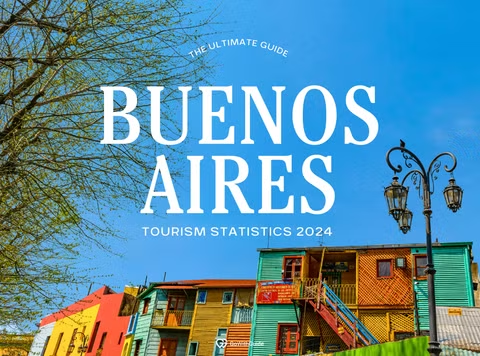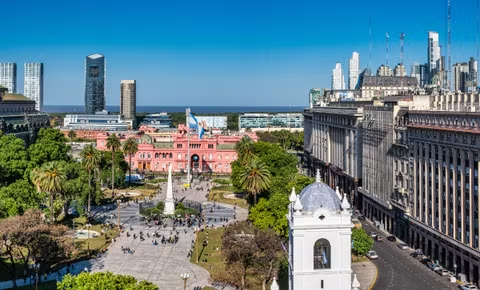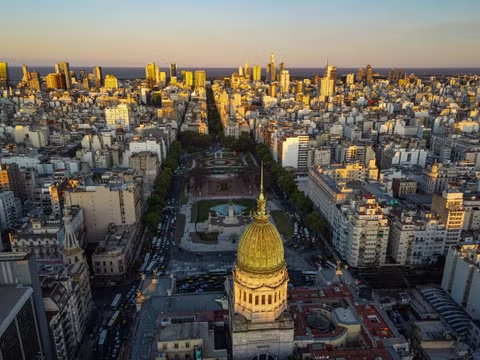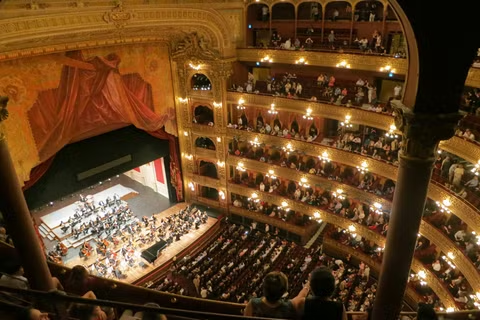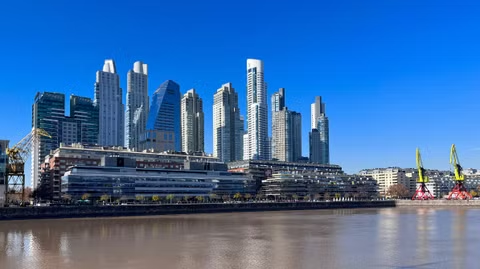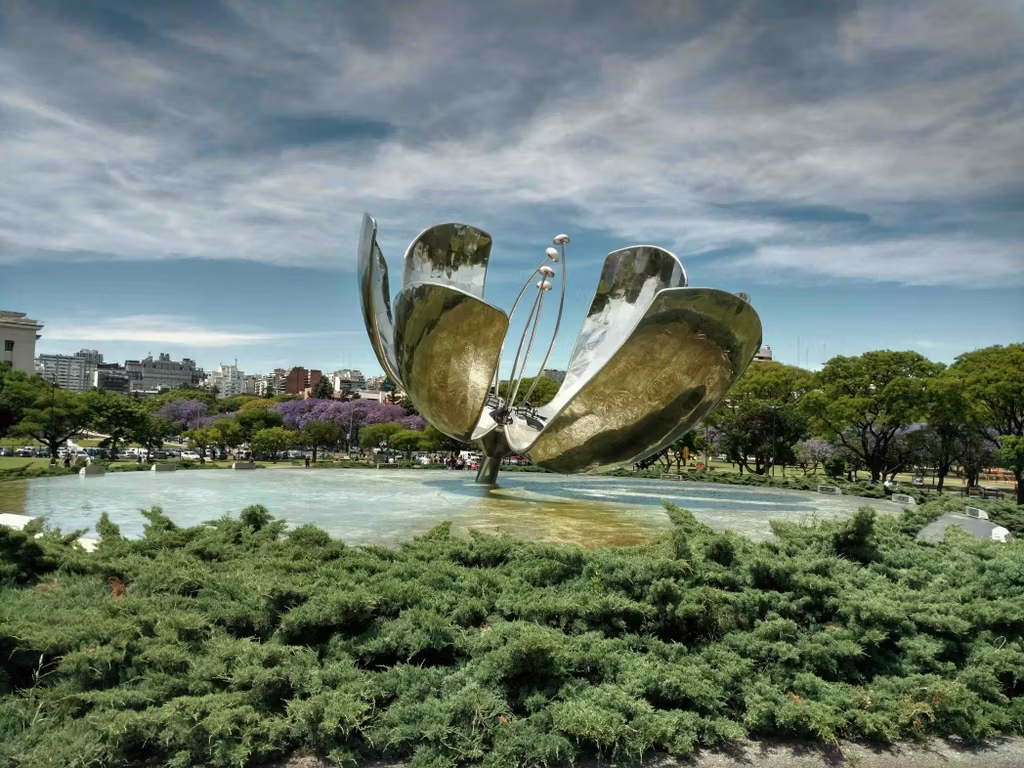
Are you wondering, "Is Buenos Aires worth visiting?"
You're not alone—this is one of the most common questions travelers ask when planning a trip to South America.
To help you decide, I’ve created this guide: “Is Buenos Aires Worth Visiting? 25 Real Reasons from a Tour Guide.”
As a professional tour guide who hosts over 100 international travelers each year, I’ve crafted this guide with practical tips, honest reflections, and insider recommendations based on firsthand experience.
From tango and steak to street art and everyday city life, this guide brings together carefully researched insights and perspectives shared by real travelers—combined with my experience as a professional tour guide. It’s here to help you decide whether Buenos Aires deserves a spot on your itinerary.
If you’re still unsure after reading, consider talking with a local guide about your travel style, interests, and expectations. They can give you a personalized perspective, suggest neighborhoods and experiences that match what you’re looking for, and help you decide if Buenos Aires is the right fit for your trip.
Book a 100% private, customizable Buenos Aires tour: Just choose a guide and message them.
25 Real Reasons to Visit Buenos Aires from a Tour Guide
Buenos Aires is a city that blends elegance, grit, passion, and charm in a way that few places in the world can match. After guiding over 100 travelers a year, I’ve learned what truly captivates visitors—and what makes them want to come back again and again.
Here are 25 reasons, based on real experiences, why Buenos Aires just might become your favorite city, too.
Legendary Argentine Steaks at Local Parrillas

Argentine steak isn’t just food—it’s a cultural event. In Buenos Aires, parrillas (traditional steakhouses) are found in every neighborhood, each with their own loyal following. Cuts like bife de chorizo (sirloin) and entraña (skirt steak) are grilled over wood or charcoal, seasoned simply with salt, and served juicy and sizzling.
What surprises many visitors is the quality-to-price ratio. For a fraction of what you'd pay in the U.S. or Europe, you can enjoy a world-class steak dinner, often paired with a bold Malbec.
If you want to experience a true local favorite, try restaurants like Don Julio (ranked among the World’s 50 Best Restaurants) or La Brigada in San Telmo—just be sure to reserve ahead.
Link to the Official website (Don Julio)
Whether you're a carnivore or just curious, visiting a parrilla is one of those must-do experiences that defines a trip to Buenos Aires.
Tango in the Streets of San Telmo
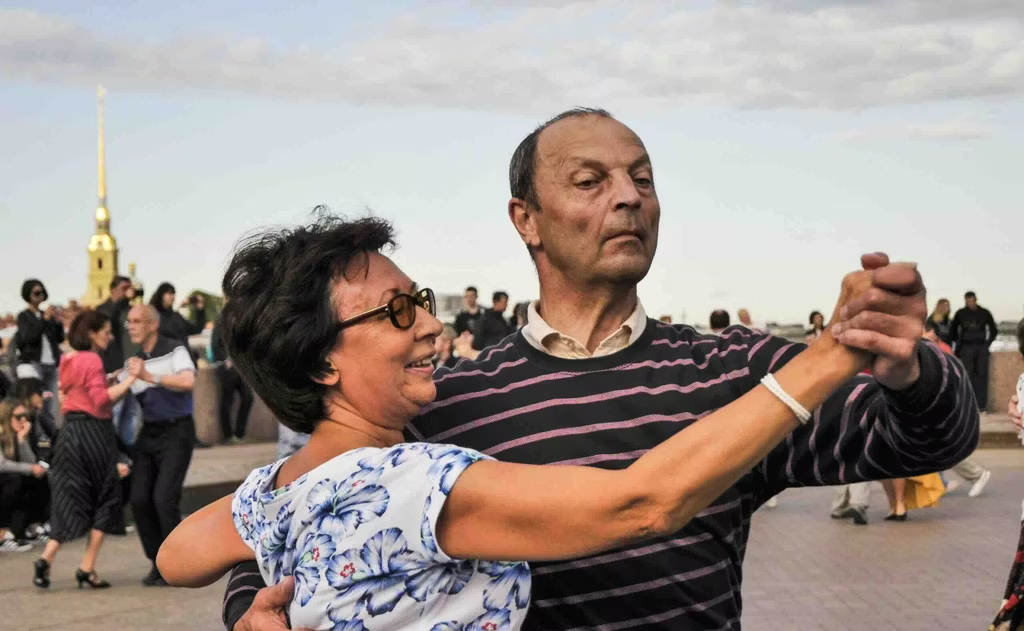
Tango was born in the working-class barrios of Buenos Aires—and in San Telmo, it’s still alive in the most authentic way. On weekends, the cobbled streets around Plaza Dorrego turn into an open-air stage, where couples glide and spin to melancholic bandoneón music. Unlike choreographed dinner shows, these performances are raw, spontaneous, and deeply emotional.
Visitors often say this is when Buenos Aires “clicked” for them—the music, the movement, the atmosphere all come together in a way that feels timeless.
If you’re inspired to try it yourself, local studios nearby offer beginner lessons in English, and there are also milongas (tango social nights) that welcome newcomers.
Unbeatable Value for Foreign Travelers
Buenos Aires is one of the best-value destinations in the world right now for foreign visitors. Due to Argentina’s fluctuating currency and economic conditions, travelers paying in dollars or euros often find that their money goes a long way—steak dinners for under $10, boutique stays for a fraction of European prices, and artisan shopping at bargain rates.
This affordability doesn’t mean you’re sacrificing quality. In fact, many travelers are surprised by the level of sophistication in food, wine, fashion, and culture—all at prices that feel almost too good to be true.
For the best rates, consider using cash exchanged at the official "MEP" or "blue dollar" rate (consult with your local host or guide for safe exchange options). You’ll be able to enjoy everything from five-course tasting menus to guided city tours without breaking your budget.
This financial accessibility is one of the reasons so many travelers say:
"I got more than I expected from Buenos Aires."
Walkable, Distinct Neighborhoods to Explore
Buenos Aires is a city of neighborhoods—each with its own rhythm, vibe, and charm. From the bohemian cobblestones of San Telmo, to the stylish cafés and street art of Palermo, to the grand elegance of Recoleta, walking through the city feels like exploring many cities in one.
Unlike some major metropolises, Buenos Aires is surprisingly walkable, especially in its central and tourist-friendly areas. Wide sidewalks, leafy parks, and pedestrian-only streets make it easy to explore on foot, with something new around every corner.
Many travelers enjoy spending a full day just getting lost in a single barrio—stopping for coffee, browsing local shops, and people-watching in a plaza. The best way to experience the real Buenos Aires isn’t by checking off landmarks—it’s by wandering, slowly.
Colorful Street Art That Covers Entire Buildings
Buenos Aires is one of the world’s street art capitals—and it doesn’t hold back. In neighborhoods like Palermo, Colegiales, and Villa Crespo, entire building facades are covered in bold, imaginative, and politically charged murals. Unlike graffiti, these works are often commissioned by residents or businesses, and many are created by internationally recognized artists.
What makes the city’s street art scene so exciting is that it’s constantly evolving. A corner you visit one month might look completely different the next. Some murals honor local heroes, others comment on current events, and many are simply pure creative expression.
Want to dig deeper? A private guide can take you off the beaten path to discover hidden alleys and explain the stories behind the art.
Contact a private guide about a customized tour for you
The Surreal and Haunting Recoleta Cemetery
This isn’t just a cemetery—it’s an architectural marvel and one of the most visited places in Buenos Aires. Recoleta Cemetery is a maze of ornate mausoleums, marble angels, and crypts that resemble miniature Gothic chapels. It’s also the resting place of famous figures like Eva Perón, Nobel laureates, and former presidents.
Wandering its narrow lanes is peaceful, eerie, and beautiful all at once. It’s often called the “Père Lachaise of South America”—but with even more grandeur packed into a smaller space.
World-Class Wine (at Bargain Prices)

Argentina is world-renowned for its Malbec, and Buenos Aires offers endless opportunities to enjoy it—often at shockingly affordable prices. Local wine bars and restaurants serve high-quality bottles from Mendoza, Patagonia, and Salta for a fraction of what you’d pay elsewhere.
Even better, many places offer wine tastings and pairing menus, so you can explore regional varietals beyond Malbec—like Torrontés or Cabernet Franc. Whether you’re a wine connoisseur or just want to sip something local with dinner, Buenos Aires is a dream for wine lovers.
The Bold Colors and Energy of La Boca
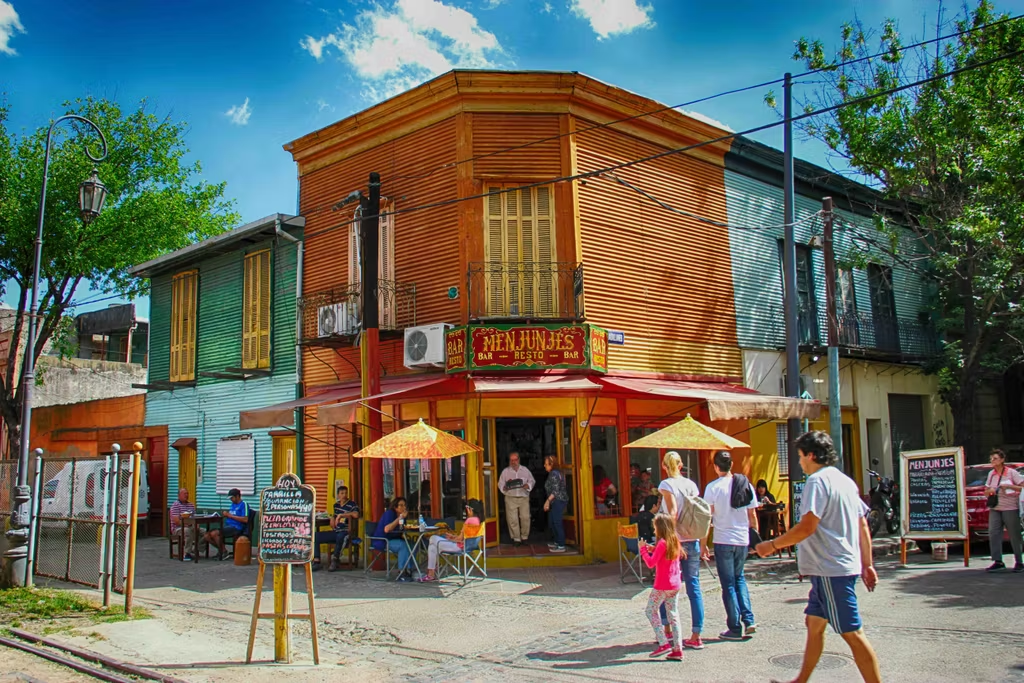
La Boca is one of the most iconic and photographed neighborhoods in Buenos Aires. The main strip, Caminito, bursts with color—buildings are painted in bold blues, reds, and yellows, reflecting the working-class history of the area. Tango dancers perform in the streets, and artists sell hand-painted goods and football memorabilia.
While it’s touristy and best visited during the day, La Boca still offers a vibrant glimpse into Buenos Aires’ cultural roots and immigrant past.
Gorgeous Bookstores Like El Ateneo
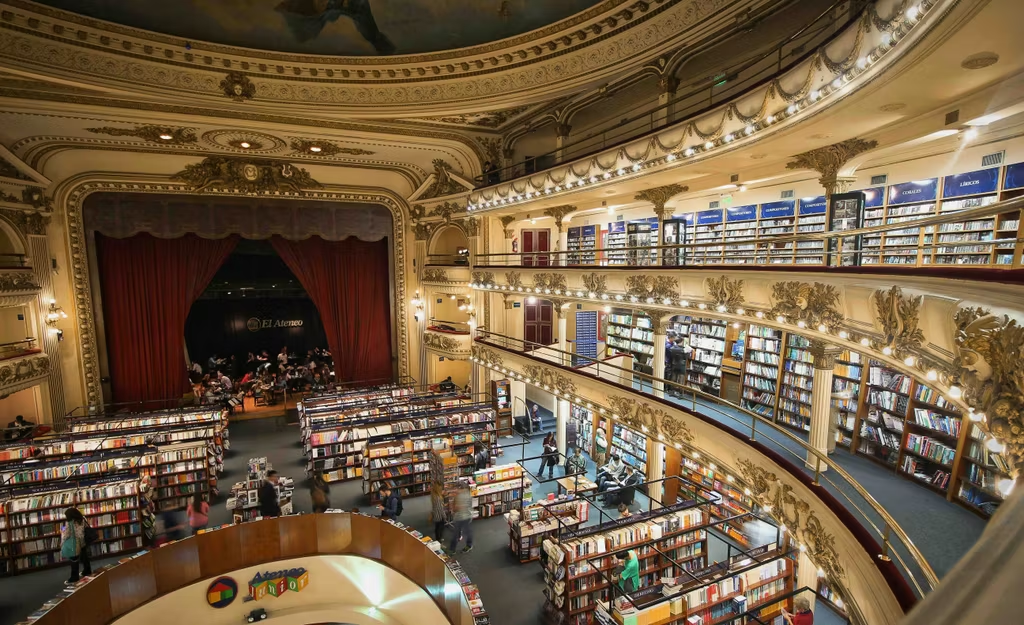
Once a grand theater, now a cathedral of books—El Ateneo Grand Splendid is consistently ranked among the most beautiful bookstores in the world. Visitors are awed by its frescoed ceiling, red velvet stage curtains, and opera boxes-turned-reading nooks.
You don’t have to love books to enjoy the space. There’s also a café on the former stage, perfect for soaking in the atmosphere. It’s a must-see, even on a short trip.
Outstanding Art Museums and Galleries
Buenos Aires is a haven for art lovers. Two standout institutions include:
- MALBA – The Latin American Art Museum of Buenos Aires, featuring works by Frida Kahlo, Diego Rivera, and modern Argentine artists.
Link to the Official site - Museo Nacional de Bellas Artes – A more classical museum with works by Goya, Van Gogh, and Monet, plus a rich collection of Argentine masters.
Link to the Official site
Both museums offer free or low-cost entry and give visitors insight into both international and local art scenes.
Contact a private guide about a customized tour for you
Nightlife That Starts Late and Ends at Sunrise
Buenos Aires nightlife is legendary—and it runs late. Locals typically start dinner around 9 or 10 PM, then head to bars or clubs after midnight. From trendy rooftop bars in Palermo to hidden speakeasies and high-energy boliches (nightclubs), the city offers a party scene for every taste.
Even if you're not a night owl, it’s worth experiencing just once to understand the energy and spontaneity that fuels the city after dark.
Deep Café Culture and Historic Coffee Houses
Coffee in Buenos Aires is not just a beverage—it’s a ritual. Locals spend hours at cafés chatting, reading, or simply watching the world go by. One of the most famous spots is Café Tortoni, established in 1858 and still a favorite for its old-world charm and literary history.
Whether you’re trying cortado (espresso with a dash of milk) or submarino (hot milk with a melting chocolate bar), café culture invites you to slow down and soak up the atmosphere.
Link to the Official site (Café Tortoni)
Evita’s Legacy and Political History

Eva Perón (Evita) remains one of Argentina’s most iconic and controversial figures. In Buenos Aires, you can walk in her footsteps—visit her former residence, her mausoleum in Recoleta Cemetery, or the Museo Evita in Palermo.
Politics is deeply woven into the city’s identity, and visiting these sites gives powerful context to Argentina’s past and present.
Link to the Official site (Museo Evita)
Rooftop Bars with Panoramic Views
If you want to see Buenos Aires from above, head to one of the city’s many rooftop bars. These elevated spots offer stunning views of the skyline, plus excellent cocktails and relaxed vibes. Favorites include Trade Sky Bar, Alvear Roof Bar, and Ninina Rooftop.
It's the perfect place to unwind after a day of walking and sightseeing.
Easy Day Trip to the Tigre Delta
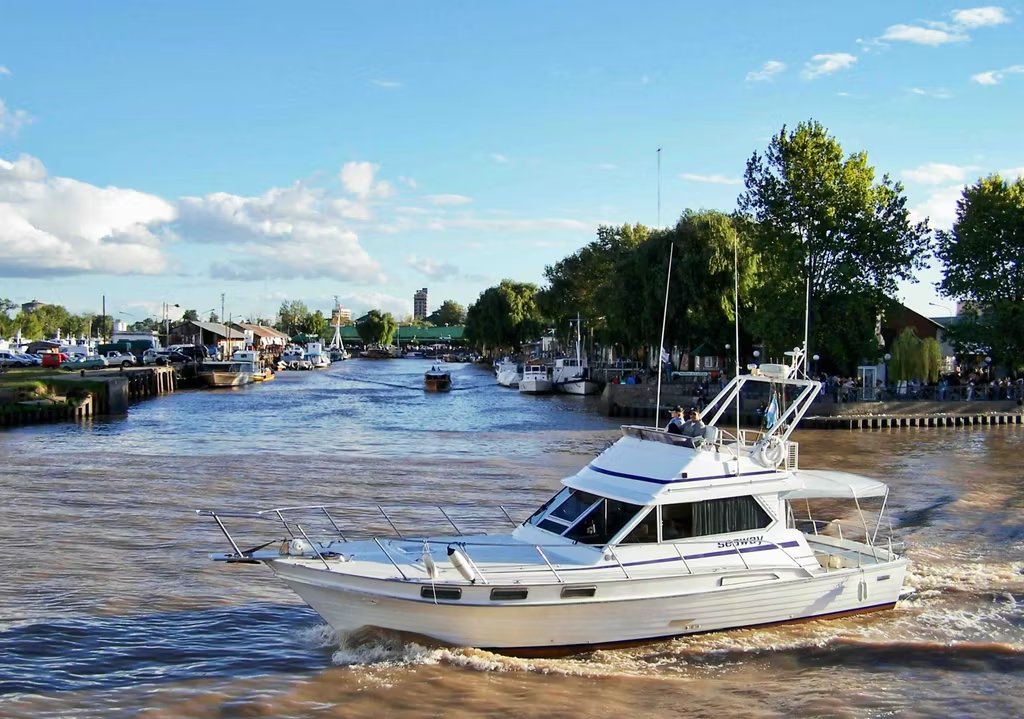
Just an hour from the city by train, Tigre offers a complete change of pace. This river town features canals, rowing clubs, riverside markets, and boat rides through lush delta waterways. It’s a popular weekend escape for locals and a relaxing, scenic day trip for travelers.
You can take a local train or join a private tour that includes boat rides and lunch by the water.
Contact a private guide about a customized day trip to Tigre
Lively Sunday Markets and Street Fairs
On Sundays, Buenos Aires comes alive with open-air markets, the most famous being the San Telmo Fair. Stretching for blocks along Defensa Street, you’ll find everything from antiques and handmade crafts to live music and impromptu tango performances. It’s a blend of art, chaos, and street culture that captures the city’s soul.
Other markets like Feria de Mataderos (focused on traditional gaucho culture) also offer a deep dive into Argentine heritage.
Passionate Football (Soccer) Culture
Football in Buenos Aires isn’t just a sport—it’s a religion. Two of the most famous teams, Boca Juniors and River Plate, have fierce rivalries and some of the most passionate fans on Earth. Attending a match at La Bombonera or El Monumental is a truly electric experience.
If you can’t make it to a stadium, watching a game at a local bar with fans shouting at the TV can be just as entertaining.
Link to the Official site (Boca Juniors)
Link to the Official site (River Plate)
A City That Feels Both European and Latin
Buenos Aires is often called the “Paris of South America,” and with good reason. Grand boulevards, ornate facades, leafy parks, and sidewalk cafés give the city a European elegance. But the vibe? That’s all Latin—emotional, expressive, and alive.
It’s this blend of refinement and rawness that makes Buenos Aires unforgettable. One moment you’re admiring French-style buildings, the next you’re caught in a passionate street performance.
Politically Active, Expressive Street Life
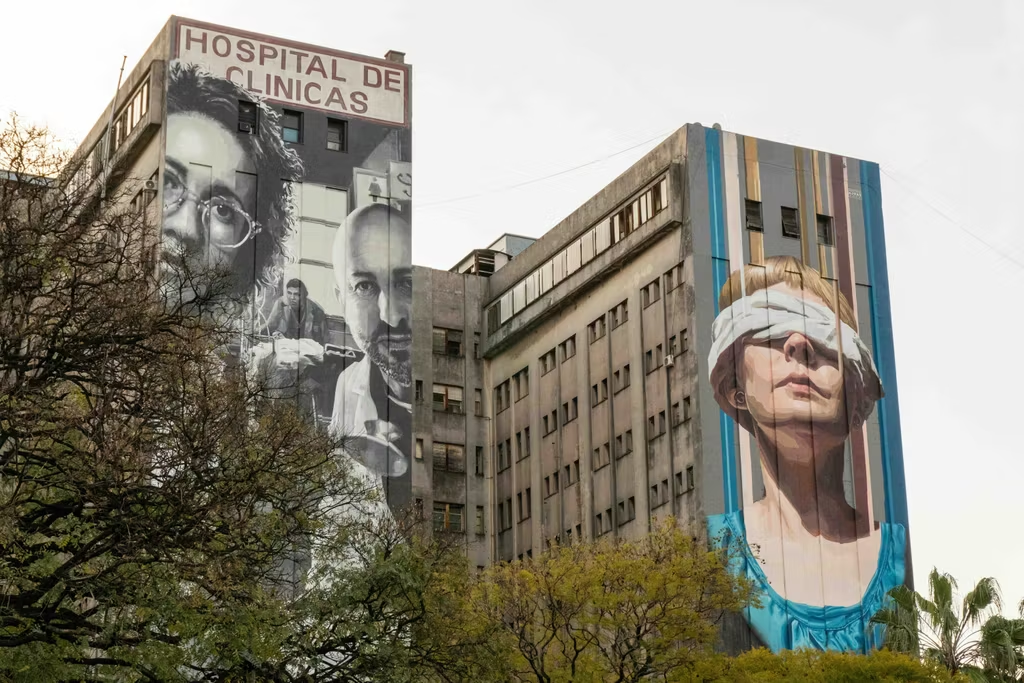
Buenos Aires wears its heart on its walls. Political expression—through graffiti, murals, or peaceful protests—is a daily part of life here. Visit Plaza de Mayo, where the Madres de Plaza de Mayo still march weekly to honor their disappeared children from the military dictatorship era.
These moments of expression are deeply moving and give visitors insight into Argentina’s turbulent, resilient history.
Warm, Emotional, and Expressive Locals
Argentines—especially porteños (people from Buenos Aires)—are warm, curious, and expressive. They talk with their hands, greet with cheek kisses, and love sharing stories (and opinions). Even if you don’t speak Spanish, you’ll feel the human connection.
Travelers often mention that conversations with locals—be it with a taxi driver, market vendor, or tango dancer—become highlights of their trip.
A Thriving Theater and Live Music Scene
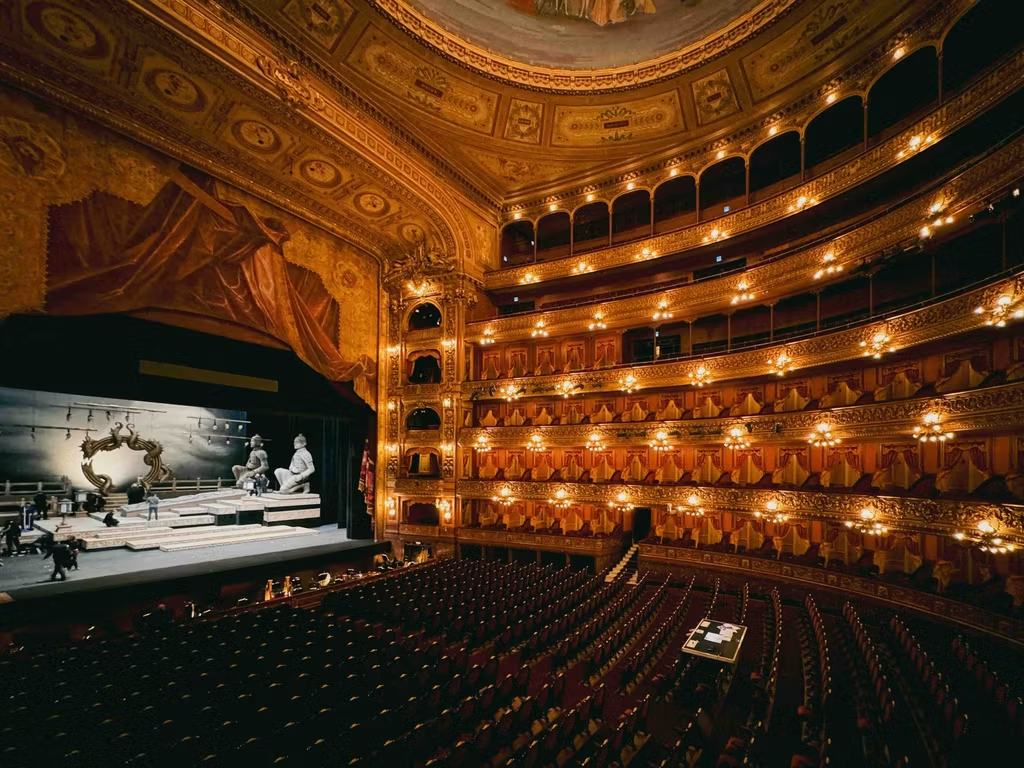
Buenos Aires is a cultural powerhouse with a love for live performance. The city boasts over 300 theaters—more than Paris or New York—including the world-famous Teatro Colón, known for its stunning acoustics and architecture. Beyond opera and ballet, you’ll find indie plays, underground comedy, and nightly live music across the city, from jazz to folklore.
Even if you don’t speak Spanish, many performances transcend language and are well worth attending.
Link to the Official site (Teatro Colón)
European-Style Architecture with Latin Soul
From Belle Époque mansions to Art Nouveau storefronts, Buenos Aires is filled with architecture that recalls Paris, Madrid, and Rome—but with its own distinct flair.
Walk through Recoleta, Monserrat, or Avenida de Mayo, and you'll see domes, iron balconies, and intricate facades that transport you to Europe—with a tango playing in the background.
This unique blend reflects Argentina’s immigrant history and gives the city its elegant but lived-in character.
Argentine Gelato That Rivals Italy’s
Thanks to its Italian heritage, Buenos Aires has some of the best gelato outside of Italy. Local chains like Freddo, Volta, and Persicco serve silky, richly flavored helado in dozens of varieties—dulce de leche being a must-try.
It’s the perfect afternoon treat while strolling the streets or relaxing in a park.
Historic Wooden Subways on Line A
Buenos Aires was the first city in Latin America to build a subway—and Line A, opened in 1913, still runs with charming wood-paneled cars (though now reserved for special events). The rest of the Subte system is a practical, affordable way to get around, and gives visitors a glimpse into the city’s past and present.
Even a short ride feels like a time-travel experience.
Link to the Official info (Subte)
Every Visit Feels Like a New Experience
Ask anyone who’s been to Buenos Aires more than once—they’ll tell you no two visits are the same. The city is constantly evolving. Murals change, new cafés open, political movements rise, and even familiar neighborhoods feel different from season to season.
That unpredictability is part of its charm. You don’t just visit Buenos Aires—you experience it, feel it, and remember it in your bones.
Book a 100% private, customizable Buenos Aires tour: Just choose a guide and message them.
Is Buenos Aires Safe to Visit?
Buenos Aires is generally considered safe for tourists, especially in well-traveled areas during daylight hours. However, like any large city, it’s important to stay aware of your surroundings and take precautions against petty crimes such as pickpocketing or bag snatching. With a little street smarts, you can enjoy the city comfortably and confidently.
Common Scams and How to Avoid Them
Scams in Buenos Aires are usually non-violent but can catch travelers off guard. Watch out for fake money changers, overly helpful strangers offering to clean your clothes (after “accidentally” spilling something), or unofficial taxis with rigged meters. Use ATMs inside banks, keep your valuables close, and be cautious in crowded areas like train stations or tourist hotspots.
Safest Neighborhoods for Tourists
Areas like Palermo, Recoleta, and Belgrano are generally very safe and popular among both tourists and locals. These neighborhoods are well-lit, walkable, and full of cafés, shops, and parks. They’re ideal for first-time visitors looking for a secure yet vibrant experience of the city.
Areas to Be Cautious In (Especially at Night)
While exploring during the day is usually fine, exercise more caution in areas like La Boca, Constitución, and Once, especially at night or when streets are quiet. If visiting La Boca, for example, stick to tourist paths like Caminito and avoid wandering off into residential side streets alone.
Transportation Safety Tips
Public transport is generally safe, but pickpocketing can happen on crowded buses (colectivos) or subways (subte), especially during rush hours. Keep bags in front of you and avoid using your phone openly near subway doors. At night, consider using reliable ride apps like Uber, Cabify, or Didi instead of hailing taxis from the street.
General Street-Smart Advice from a Tour Guide
Leave expensive jewelry and flashy items at your hotel. Use a cross-body bag or money belt, avoid displaying large amounts of cash, and keep a copy of your passport separately. Most importantly, trust your instincts—if a place feels off, move on.
Is Buenos Aires Expensive or Budget-Friendly?

For most international travelers, Buenos Aires is incredibly affordable—sometimes surprisingly so. Due to Argentina’s unique economic situation and currency exchange dynamics, you can enjoy gourmet meals, boutique accommodations, and cultural activities at a fraction of the price you'd pay in North America or Europe. That said, understanding how money works here is key to getting the best value.
Why Buenos Aires Feels Cheap for Foreigners
Because of Argentina's inflation and multiple exchange rates, travelers using foreign currency—especially dollars or euros—can stretch their budgets further. For example, a steak dinner with wine might cost under $10, and a high-quality Airbnb in a central neighborhood can be found for $30–50 per night. Prices feel almost too good to be true—but they’re real.
How the Exchange Rate Works
Argentina has multiple exchange rates: the official rate, the "MEP" rate (used through official apps like Western Union), and the informal “blue dollar” rate. Most visitors use Western Union to send money to themselves, withdrawing pesos at a favorable rate. Avoid using credit cards when possible, as they typically convert at the lower official rate.
What You Can Expect to Spend
- Coffee: $1–2
- Public transport ride: $0.20–0.40
- Dinner at a local restaurant: $8–15
- Museum ticket: Often free or under $3
- Private guided tour: $40–80 depending on length and type
Of course, prices vary, but even luxury travel here is relatively accessible.
Smart Money Tips from a Tour Guide
- Use cash for most transactions
- Exchange money safely (ask your guide or host for reliable options)
- Avoid exchanging large sums at the airport
- Carry small bills, as change can be hard to get
- Always ask if prices are listed in pesos or dollars
Navigating the currency situation can be tricky at first—but with the right guidance, you’ll save money and avoid confusion.
If you'd like help with local rates, restaurant picks, or even just figuring out the money exchange, a private guide can make your experience smoother and far more enjoyable.
Book a 100% private, customizable Buenos Aires tour: Just choose a guide and message them.
Where to Stay in Buenos Aires
Choosing the right neighborhood can shape your entire Buenos Aires experience. Each area offers its own atmosphere, attractions, and rhythm. Whether you’re into nightlife, architecture, quiet strolls, or local markets, there’s a barrio that fits your style.
Palermo: Trendy, Walkable, and Full of Life
Palermo is the largest and trendiest neighborhood in Buenos Aires, especially its sub-areas like Palermo Soho and Palermo Hollywood. Expect leafy streets, hip cafés, craft beer bars, boutique shops, and vibrant nightlife. It’s ideal for younger travelers, digital nomads, and first-timers who want a lively, walkable base.
Recoleta: Elegant, Central, and Safe
If you prefer a quieter, more refined stay, Recoleta is perfect. Known for its French-style architecture, museums, and leafy plazas, it’s one of the safest and most beautiful areas in the city. You're also close to the Recoleta Cemetery, museums, and high-end shops.
San Telmo: Historic, Artsy, and Full of Character
San Telmo is the city’s oldest neighborhood, known for its cobblestone streets, antique markets, and bohemian vibe. It’s a great choice for history lovers and those wanting a more authentic, lived-in feel. On Sundays, the area comes alive with the famous San Telmo Market and street tango performances.
Microcentro & Montserrat: Central but Busy
If proximity to landmarks like the Casa Rosada, Obelisk, and Plaza de Mayo is your priority, the city center (Microcentro and Montserrat) might suit you. That said, it’s more business-oriented, with less nightlife and fewer cafés open late. Good for short stays or budget options, but quieter at night.
Belgrano: Residential, Green, and Family-Friendly
A bit farther from tourist landmarks, Belgrano offers a more local experience with tree-lined streets, parks, and good access to public transport. It's ideal for longer stays or travelers who want a calm base while still being connected to the city.
Book a 100% private, customizable Buenos Aires tour: Just choose a guide and message them.
What Kind of Traveler Will Enjoy Buenos Aires?
Buenos Aires isn’t a one-size-fits-all destination—but for the right traveler, it can be unforgettable. The city blends European charm with Latin energy, offering rich culture, deep emotion, and a few contradictions. Here's who tends to fall in love with it—and who might not.
Ideal for Culture Lovers, Foodies, and Explorers
If you love art, history, literature, live music, and museums, Buenos Aires will keep you busy for days. Foodies also thrive here—between steak, wine, gelato, and empanadas, every meal feels like an experience.
Those who enjoy walking cities, observing local life, or diving into layered history and political context often say the city "gets under your skin" in the best way.
Great for Solo Travelers
Buenos Aires is a fantastic solo destination. It’s walkable, filled with friendly locals, and has a vibrant café and bar culture that encourages casual interaction. Many solo travelers feel welcome, safe (with basic precautions), and engaged.
Perfect for Creative and Romantic Souls
Writers, dancers, artists, and romantics often connect deeply with the city’s melancholy beauty. The tango, dramatic architecture, expressive people, and late-night conversations add up to something you don’t easily forget.
Who Might Not Enjoy It as Much
If you’re looking for ultra-smooth logistics, spotless infrastructure, or ultra-modern convenience, you might get frustrated. The city can feel chaotic, noisy, or unpredictable—especially for those expecting things to run “on time” or like clockwork.
That said, with the right mindset, those quirks become part of the charm.
Book a 100% private, customizable Buenos Aires tour: Just choose a guide and message them.
Buenos Aires vs Other South American Cities
South America offers a diverse range of travel experiences—and deciding between cities like Buenos Aires, Santiago, Lima, Montevideo, or Rio de Janeiro can be tough. Each has its strengths, depending on what kind of trip you’re after. Here's how Buenos Aires stacks up.
Buenos Aires vs Santiago
- Santiago is modern, clean, and framed by dramatic mountains. It’s efficient, compact, and ideal for travelers who love outdoor adventures like hiking or skiing.
- Buenos Aires, on the other hand, is more emotional and chaotic—but also more vibrant in terms of culture, nightlife, and personality. If you’re seeking soul and spontaneity over order, BA wins.
Buenos Aires vs Lima
- Lima is a coastal capital with incredible cuisine and pre-Columbian history. It's great for food lovers and those interested in ancient civilizations.
- Buenos Aires offers a more European feel, walkable neighborhoods, and a stronger art, café, and tango scene. If food is your top priority, Lima might edge out—but BA offers a more complete city lifestyle.
Buenos Aires vs Montevideo
- Montevideo (just across the river from BA) is smaller, calmer, and more relaxed. It’s perfect for a beachside escape or slow travel.
- Buenos Aires has more energy, variety, and things to do—but also more hustle. Many travelers do both, spending a few days in each city.
Buenos Aires vs Rio de Janeiro
- Rio is breathtaking—beaches, mountains, and iconic views. It’s ideal for nature lovers and beachgoers.
- Buenos Aires is inland and urban, better for those who crave cultural immersion, performance arts, and walkable city life. Think Rio for scenery, BA for soul.
Each city in South America has its own magic—but if you're drawn to creativity, emotion, and depth of experience, Buenos Aires offers something truly unique.
Book a 100% private, customizable Buenos Aires tour: Just choose a guide and message them.
When Is the Best Time to Visit Buenos Aires?
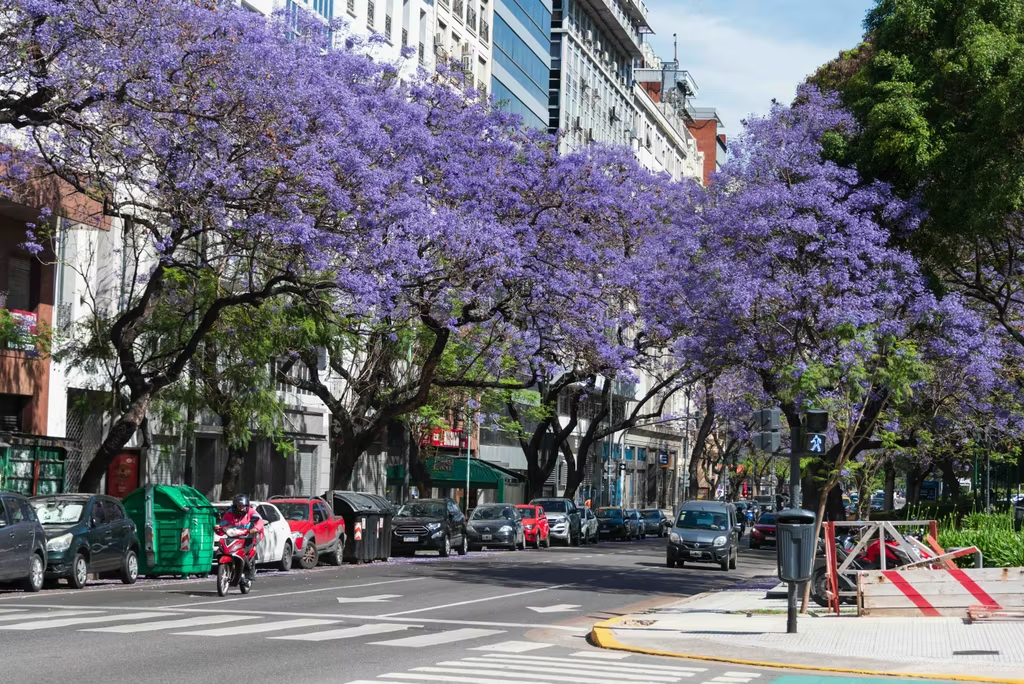
Buenos Aires is a year-round destination, but your experience can vary dramatically depending on the season. Weather, events, and crowds all shift throughout the year, so it's worth timing your visit for what suits you best.
Spring (September–November)
This is arguably the best time to visit. The weather is mild, flowers are blooming (including the iconic jacaranda trees), and outdoor cafés and parks are full of life. It’s perfect for walking tours, local festivals, and photography.
Summer (December–February)
Expect hot, humid days with temperatures often over 30°C (86°F). It’s the peak holiday season for locals, so the city may feel quieter in some areas as residents head to the coast. Some museums and restaurants may close for short breaks.
Autumn (March–May)
Another excellent season. The weather cools down, crowds thin out, and the trees turn golden. It’s ideal for relaxed sightseeing and enjoying the café culture. Prices are often lower than in peak season.
Winter (June–August)
Winters are mild by global standards, but cooler and cloudier. Temperatures hover around 10–15°C (50–59°F). It's a cozy time for museums, tango shows, and indoor markets, though not ideal for those expecting sunshine.
Local Holidays and Events to Consider
- Carnival (February/March): Street parades and celebrations
- BA International Book Fair (April/May)
- Tango Festival (August)
- Semana Santa/Easter: Some closures, but also cultural activities
- Christmas & New Year: Very quiet; many locals leave the city
Book a 100% private, customizable Buenos Aires tour: Just choose a guide and message them.
How Many Days Is Enough in Buenos Aires?
The ideal number of days in Buenos Aires depends on your travel style—but to truly get a feel for the city, at least 3 full days is recommended. That gives you enough time to explore the key neighborhoods, enjoy a tango night, try some steak and wine, and still have room for spontaneity.
2 Days: A Quick Taste
- Day 1: Recoleta + Palermo (parks, architecture, cafés)
- Day 2: San Telmo + La Boca + evening tango show
Perfect if Buenos Aires is just a stopover or part of a longer itinerary.
3–4 Days: A Balanced Experience
- Adds time for local markets, art museums, and casual wandering
- Great for discovering hidden corners and soaking in café culture
- This is the sweet spot for most travelers.
5+ Days: Deeper Dive or Slow Travel
- Includes a day trip to Tigre, neighborhood food tours, or local classes
- Ideal for remote workers, creatives, or culture-focused travelers
- Buenos Aires rewards slow exploration—it’s the kind of city where unplanned days often become the most memorable.
Is Argentina Friendly to Tourists?
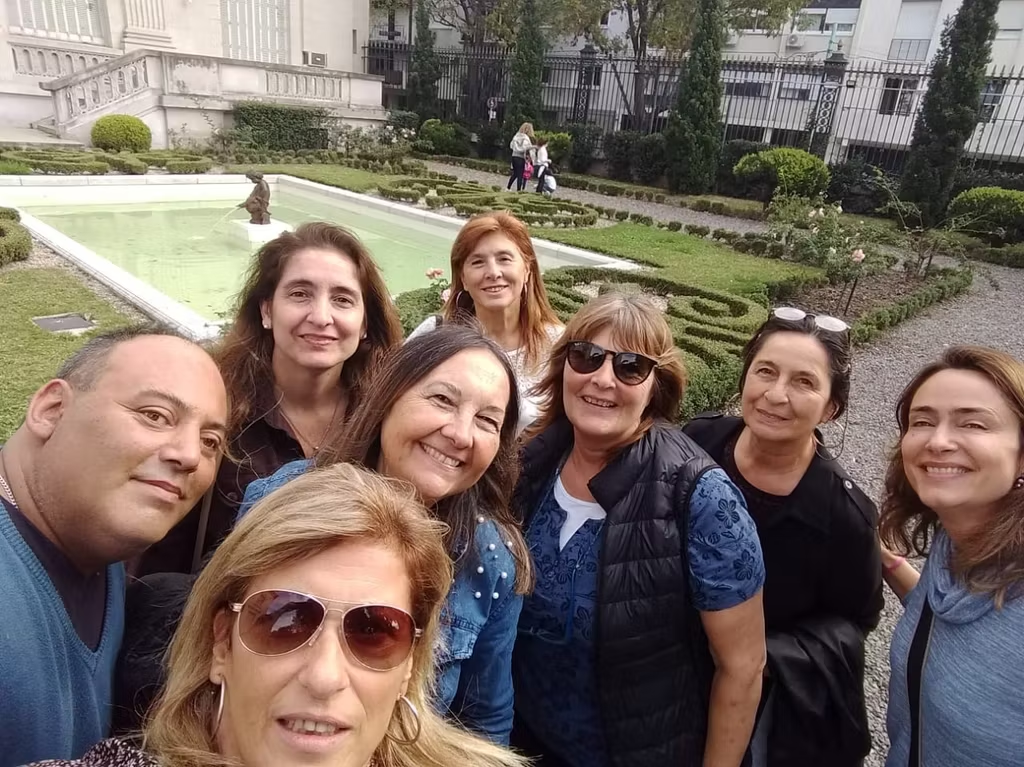
Yes—Argentinians are generally very friendly, welcoming, and curious about visitors, especially in Buenos Aires. While they may not always speak fluent English, they often go out of their way to help, offer directions, or engage in conversation (especially if you try a few words in Spanish!).
Locals are warm, expressive, and passionate. You may be greeted with a kiss on the cheek, drawn into a political debate, or offered a sip of mate (the national herbal tea) by a stranger in the park. It’s all part of the culture.
A Few Tips to Connect Easily
Learn a few Spanish phrases—even just “Hola” and “Gracias” go a long way.
- Respect local customs, like late dining hours or casual social norms.
- Ask questions—Porteños love to talk about their city, football, or politics.
- Show interest in tango, food, or culture—it opens doors.
Buenos Aires might seem intense at first glance, but most visitors quickly find that people are eager to connect, share, and make you feel at home.
Want to meet locals in a more personal way or avoid language barriers? A private guide can help bridge the cultural gap and make your trip even more memorable.
Connect with a local guide and discover the real Buenos Aires
Frequently Asked Questions
Here are quick answers to some of the most common concerns travelers have before visiting Buenos Aires:
Is English widely spoken?
In tourist areas, yes—but not everywhere. Younger people and service industry workers often speak some English. Learning a few Spanish basics helps a lot.
What’s the best way to get around the city?
The Subte (subway) is cheap and efficient. Buses are extensive but require a local transit card (SUBE). Ride apps like Uber and Cabify are popular, especially at night.
How do I pay for things?
Cash (in pesos) is king. Use Western Union to get a better exchange rate than credit cards. Always check if prices are listed in pesos or dollars.
Is it safe to drink the tap water?
Yes, tap water is safe in Buenos Aires. Bottled water is still common, but not necessary.
What should I eat besides steak?
Try empanadas, milanesa, choripán, provoleta, and local ice cream. Vegetarian options are growing too, especially in Palermo.
Do I need a visa?
Most travelers from the U.S., Canada, EU, Australia, and Japan do not need a visa for short stays (under 90 days). Always double-check current rules before your trip.
What’s the dress code like?
Casual but stylish. Locals take pride in their appearance, even when dressed casually. You’ll blend in better by skipping flip-flops and gym wear.
Conclusion: Should You Visit Buenos Aires or Skip It?
Buenos Aires isn’t for everyone—but for many, it becomes a city they remember forever. It’s messy, passionate, soulful, and layered. You won’t find pristine tourist infrastructure or polished perfection—but you will find life, emotion, flavor, and depth.
If you’re looking for a city that challenges and charms you, that offers unforgettable meals, live music on street corners, and conversations with strangers who speak with their hands and their hearts—then yes, Buenos Aires is absolutely worth visiting.
For the best experience, consider pairing spontaneous exploration with a bit of local insight.
Book a 100% private, customizable Buenos Aires tour: Just choose a guide and message them.




